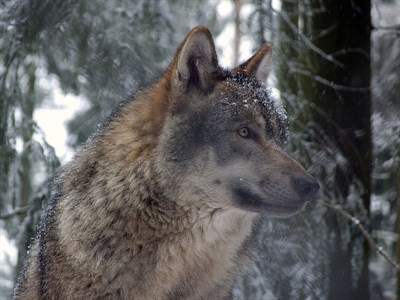
Image Credit: (SOURCE: Wikipedia)
January 11, 2013 - 5:06 PM
Wolves have returned to the Okanagan and the B.C. government believes populations are resilient enough to sustain open season hunting.
Wolves were extirpated from much of B.C. due to extreme efforts in the first half of the 20th century to exterminate them. Recognition of their role in balancing predator-prey systems has since encouraged policies to restore wolves to their former range, and the number of wolves in the Okanagan is believed to have grown to around 75-100 individuals over the last 30 years.
Despite concern from ranchers about predation on livestock, a manager with the Fish, Wildlife and Habitat Management Branch says the relaxed hunting regulations are geared at expanding recreational hunting opportunities, not mitigating attacks on domesticated animals.
"Many regions in B.C. now have viable populations, and because of that there is an opportunity for recreational hunting of wolves," Jeff Morgan says.
Formerly, it was illegal to kill wolves unless they were attacking livestock on private property. Even then, the property owner had to prove the wolf was causing harm, and was required to report the kill.
Under the new rules, up to three wolves can be shot or trapped without the need for justification between Sept. 10 and June 15 on one's own property or on Crown land with a regular hunting or trapping license for residents of B.C.
A special species tag is required for non-B.C. residents.
While Morgan can't comment on the breadth of the wolf pelt industry, he says pelts are why hunters would take down wolves. He says wolf pelts have a low value, and as such, hunting and trapping for that purpose is unlikely to get out of hand.
"I think people will choose to hunt wolves opportunistically if they encounter them while tracking something else."
Morgan says the impetus for legalizing wolf hunts was the reality that populations were rising in the Okanagan.
"It was recognized there was a surplus of wolves here," Morgan says, noting wolves can withstand harvests of 34% and still maintain themselves.
He says a series of mild winters caused deer and moose populations to balloon, and the high density of prey attracted wolves to the area.
"Wolves can play an ecological role influencing prey populations," Morgan says, adding that role is being considered in a new draft management plan.
He says the goal isn't to diminish the wolf population, but to make use of it for recreational purposes.
"Wolves are very wily," he says. "They're not easy to catch." The fact they are largely nocturnal and live in heavily forested areas makes them a challenge to catch, he says.
"We don't know what the harvest rate will be," he says, noting rules may be modified based on continual ground research.
He says the government's decisions on wolf management are based on the mixed interests of various stakeholders, from the B.C. Trappers Association, to livestock producers, to environmentalists.
While the Okanagan has a three wolf limit, the North Thompson region has no restrictions.
—Charlotte Helston
chelston@infotelnews.ca
(250)-309-5230
News from © iNFOnews, 2013